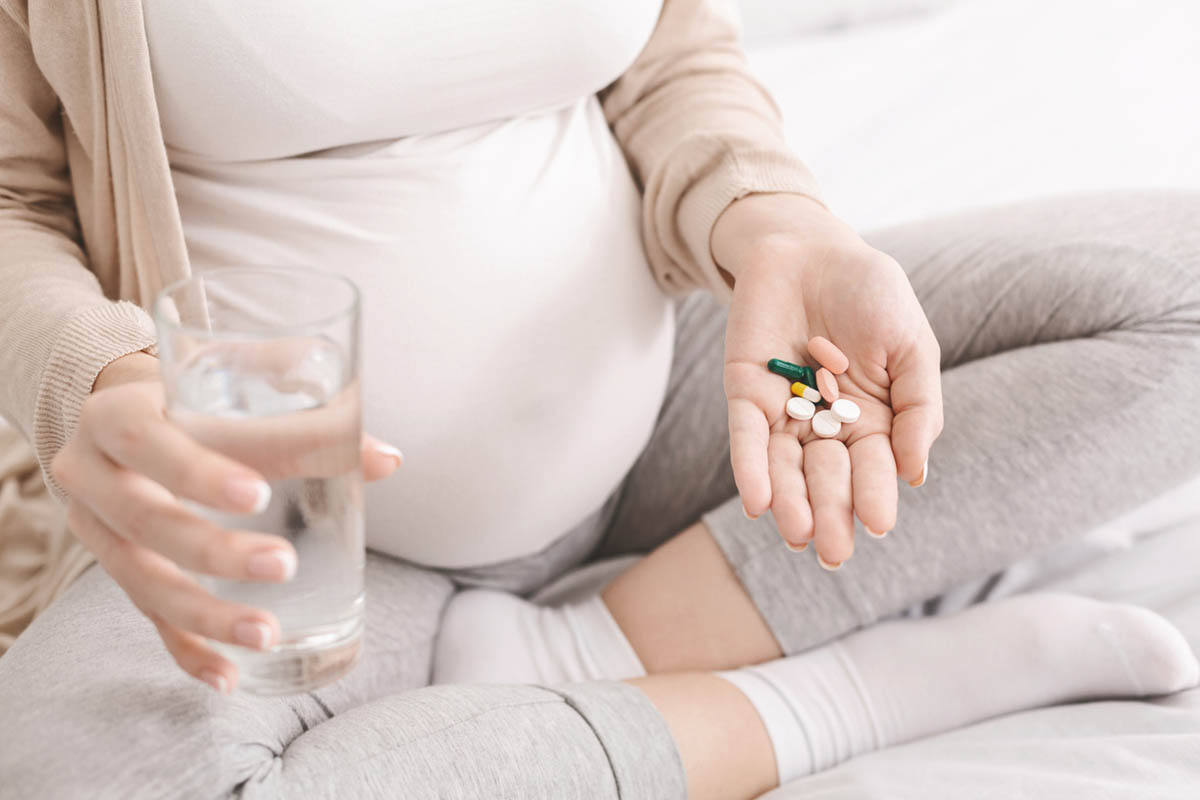Article Abstract
See article by Chen et al.
Major depressive disorder (MDD) is one of the most common and deleterious illnesses to affect humankind, posing several unique challenges to clinicians and patients alike.1-10 The majority of currently marketed treatments for MDD are effective only for a subset of patients,11 and often with considerable delay in symptom relief.12 One exception to the rule has been intravenous ketamine, which has repeatedly been shown to result in a rapid and robust resolution of depressive symptoms in MDD patients.13 As a result, the use of this off-label therapy has grown significantly over the years. In fact, its use has further grown following approval by the US Food and Drug Administration of intranasal esketamine for treatment-resistant depression—a decision that firmly establishes N-methyl-d-aspartate (NMDA)-receptor antagonism as a valid antidepressant mechanism of action in the public eye. The limitation, however, of intravenous ketamine administration is that very little is known about how to maintain initial treatment gains. Thus, although intravenous ketamine has proved to be a rapid-acting antidepressant, maintaining these effects long-term remains elusive for many patients.14 A recent article published in the Journal by Chen and colleagues15 sheds new light on this important clinical and research question.
Specifically, Chen et al examined a group of patients from Taiwan with treatment-resistant depression who underwent a single infusion with placebo, 0.5 mg/kg of ketamine, or 0.2 mg/kg of ketamine and were then followed for up to 14 days postinfusion. Alongside depressive symptoms, the change in each patient’s subjective sense of happiness was measured prior to and immediately following the infusion. Interestingly enough, the authors found that a subjective increase in a patient’s sense of happiness predicted a better treatment course compared to study participants without such a change.
There are several important questions and potential clinical implications that may arise from this work. First and foremost, there is a need to replicate these findings, especially in groups of different racial and ethnic backgrounds. In turn, this brings up the question of whether the construct of happiness as used in this study is understood similarly or differently among patients of various backgrounds and whether that would result in discrepant findings. A brief review conducted by the authors of the article suggests that their finding may, indeed, be generalizable. Nonetheless, a replication in a variety of groups would only strengthen this finding.
What then would be the potential clinical implications of such a relationship? Perhaps a lack of change in happiness following an infusion can be used to help identify and prioritize remitters for several more infusions in order to help turn remission into recovery. Conversely, remitters following an infusion who do experience an increase in subjective happiness could perhaps be prescribed a less intensive, more cost-conscious, and, hence, more feasible maintenance regimen. If so, the same arguments could be made with subjects who have experienced less than complete remission such as clinical response or even partial response.
Going a step further, is there a phenotype that would help predict which subjects are more likely to experience an increase in happiness along with symptom improvement during the first infusion? Would atypical depression, with its preservation of mood reactivity as compared with melancholia or alexithymia, fit the bill? Opportunities may also present themselves for biologic phenotyping. For instance, another question to answer would be whether subjects who are more likely to show striatal activation following simulated reward are better suited for receiving ketamine infusions when anticipating a lasting clinical effect?
Another investigative path that could result from furthering our knowledge about the relationship between happiness and the potential lasting antidepressant effects of intravenous ketamine would involve exploring ways to elaborate on ketamine therapy itself. For example, it might be possible to pair ketamine administration with that of a compound specifically designed to optimize striatal reward function. In a recently published study, for instance, Krystal et al16 examined the use of a selective κ opioid receptor antagonist in patients with anhedonia with either a mood or anxiety disorder and found significantly increased functional magnetic resonance imaging (fMRI) ventral striatum activation during reward anticipation (the study primary outcome, based on a test developed by the group) as compared to placebo. A similar finding has been shown involving the use of the tumor necrosis factor (TNF)-α antagonist infliximab in patients with bipolar disorder.17 Similar findings have been reported involving the use of bupropion, a dopaminergic and noradrenergic antidepressant, in healthy subjects18 as well as nicotinoidergic manipulation in nonsmokers with MDD.19
These are just some of the numerous clinical scenarios that would be worthy of rigorous investigation as suggested by this work. In turn, findings may help improve the long-term efficacy of intravenous ketamine for patients with MDD.
Published online: November 10, 2020.
Potential conflicts of interest: Dr Papakostas has served as a consultant for Abbott, Acadia*, Alkermes, Alphasigma USA*, AstraZeneca, Avanir, Axsome Therapeutics*, Boston Pharmaceuticals*, Brainsway, Bristol-Myers Squibb, Cala Health*, Cephalon, Dey Pharma, Eleusis Health Solutions*, Eli Lilly, Genentech*, Genomind*, GlaxoSmithKline, Evotec AG, H. Lundbeck A/S, Inflabloc, Janssen Global Services*, Jazz, Johnson & Johnson Companies*, Methylation Sciences, Mylan*, Novartis Pharma AG, One Carbon Therapeutics*, Osmotica*, Otsuka, PAMLAB, Pfizer, Pierre Fabre, Ridge Diagnostics (formerly known as Precision Human Biolaboratories), Sage Therapeutics*, Shire, Sunovion, Taisho*, Takeda, Theracos, and Wyeth; has received honoraria (for lectures or consultancy) from Abbott, Acadia, Alkermes, Alphasigma USA, Asopharma America Cntral Y Caribe, AstraZeneca, Avanir, Bristol-Myers Squibb, Brainsway, Cephalon, Dey Pharma, Eli Lilly, Evotec AG, Forest, GlaxoSmithKline, Inflabloc, Grunbiotics, Hypera S.A., Jazz, H. Lundbeck A/S, Medichem, Meiji Seika Pharma, Novartis Pharma AG, Otsuka, PAMLAB, Pfizer, Pharma Trade SAS, Pierre Fabre, Ridge Diagnostics, Shire, Sunovion, Takeda, Theracos, Titan, and Wyeth; has received research support (paid to hospital) from AstraZeneca, Bristol-Myers Squibb, Cala Health, Forest, National Institute of Mental Health, Mylan, Neuralstem*, PAMLAB, PCORI, Pfizer, Johnson & Johnson Companies, Ridge Diagnostics (formerly known as Precision Human Biolaboratories), Sunovion, Tal Medical, and Theracos; and has served (not currently) on speakers bureaus for Bristol-Myers Squibb and Pfizer.
*Asterisk denotes consulting activity undertaken on behalf of Massachusetts General Hospital.
Funding/support: None.
REFERENCES
1.Papakostas GI, Jackson WC, Rafeyan R, et al. Inadequate response to antidepressant treatment in major depressive disorder. J Clin Psychiatry. 2020;81(3):OT19037COM5. PubMed
2.Papakostas GI, Jackson WC, Rafeyan R, et al. Overcoming challenges to treat inadequate response in major depressive disorder. J Clin Psychiatry. 2020;81(3):OT19037BR4. PubMed
3.Rafeyan R, Papakostas GI, Jackson WC, et al. Inadequate response to treatment in major depressive disorder: augmentation and adjunctive strategies. J Clin Psychiatry. 2020;81(3):OT19037BR3. PubMed CrossRef
4.Jackson WC, Papakostas GI, Rafeyan R, et al. Recognizing inadequate response in patients with major depressive disorder. J Clin Psychiatry. 2020;81(3):OT19037BR2. PubMed CrossRef
5.Trivedi MH, Papakostas GI, Jackson WC, et al. Implementing measurement-based care to determine and treat inadequate response. J Clin Psychiatry. 2020;81(3):OT19037BR1. PubMed CrossRef
6.Trivedi MH. How can measurement-based care help improve treatment outcomes for major depressive disorder in primary care? J Clin Psychiatry. 2020;81(2):UT17042BR2C. PubMed CrossRef
7.Trivedi MH. Major depressive disorder in primary care: strategies for identification. J Clin Psychiatry. 2020;81(2):UT17042BR1C. PubMed CrossRef
8.Citrome L, Gaynes BN, Goldberg JF, et al. New mechanisms, new opportunities: integrating novel antidepressants in the treatment of major depressive disorder. J Clin Psychiatry. 2019;80(5):TK18061AS2C. PubMed CrossRef
9.Thase ME. Current and emerging treatments to address unmet needs in MDD. J Clin Psychiatry. 2019;80(1):AL18009BR1C. PubMed
10.Kinrys G, Gold AK, Pisano VD, et al. Tachyphylaxis in major depressive disorder: a review of the current state of research. J Affect Disord. 2019;245:488-497. PubMed CrossRef
11.Salloum NC, Papakostas GI. Staging treatment intensity and defining resistant depression: historical overview and future directions. J Clin Psychiatry. 2019;80(4):18r12250. PubMed CrossRef
12.Ionescu DF, Papakostas GI. Current trends in identifying rapidly acting treatments for depression. Curr Behav Neurosci Rep. 2016;3(2):185-191. PubMed CrossRef
13.Kryst J, Kawalec P, Mitoraj AM, et al. Efficacy of single and repeated administration of ketamine in unipolar and bipolar depression: a meta-analysis of randomized clinical trials. Pharmacol Rep. 2020;72(3):543-562. PubMed CrossRef
14.Papakostas GI. Maintaining rapid antidepressant effects following ketamine infusion: a major unmet need. J Clin Psychiatry. 2020;81(2):19r12859. PubMed CrossRef
15.Chen M-H, Lin W-C, Wu H-J, et al. Happiness during low-dose ketamine infusion predicts treatment response: reexploring the Adjunctive Ketamine Study of Taiwanese Patients With Treatment-Resistant Depression. J Clin Psychiatry. 2020;81(6):20m13232.
16.Krystal AD, Pizzagalli DA, Smoski M, et al. A randomized proof-of-mechanism trial applying the “fast-fail” approach to evaluating κ-opioid antagonism as a treatment for anhedonia. Nat Med. 2020;26(5):760-768. PubMed CrossRef
17.Lee Y, Mansur RB, Brietzke E, et al. Efficacy of adjunctive infliximab vs placebo in the treatment of anhedonia in bipolar I/II depression. Brain Behav Immun. 2020;88:631-639. PubMed CrossRef
18.Ikeda Y, Funayama T, Tateno A, et al. Bupropion increases activation in nucleus accumbens during anticipation of monetary reward. Psychopharmacology (Berl). 2019;236(12):3655-3665. PubMed CrossRef
19.Admon R, Kaiser RH, Dillon DG, et al. Dopaminergic enhancement of striatal response to reward in major depression. Am J Psychiatry. 2017;174(4):378-386. PubMed CrossRef
aMassachusetts General Hospital, Boston, Massachusetts
*Corresponding author: George I. Papakostas, MD, Massachusetts General Hospital, One Bowdoin Sq, 9th Fl, Boston, MA 02114 ([email protected]).
J Clin Psychiatry 2020;81(6):20com13636
To cite: Papakostas GI. Happiness and treatment outcome in resistant depression. J Clin Psychiatry. 2020;81(6):20com13636.
To share: https://doi.org/10.4088/JCP.20com13636
© Copyright 2020 Physicians Postgraduate Press, Inc.
This PDF is free for all visitors!




